In this post I will explore popular garments within South Africa.
The many ethnic groups making up South Africa, make for many different popular styles and trends between individual groups of people. Below I have explored some of the popular traditional clothing styles of multiple dominant groups.
Indian South Africans
South Africa is home to Durban, the largest Indian city outside of India. Its large Indian population causes many fashion trend crossovers. Within these groups, popular garments such as; embroidered saris, sherwanis, and traditional dresses are mainly saved for special occasions. Western clothing is usually worn on a daily basis.



Cape Malay
A minority group in South Africa, known as the Cape Malay, are a collection of followers of the Muslim belief. The people within this group commonly wear western clothing on a day to day basis, saving traditional wear for worship at the mosque, special events and celebrations.
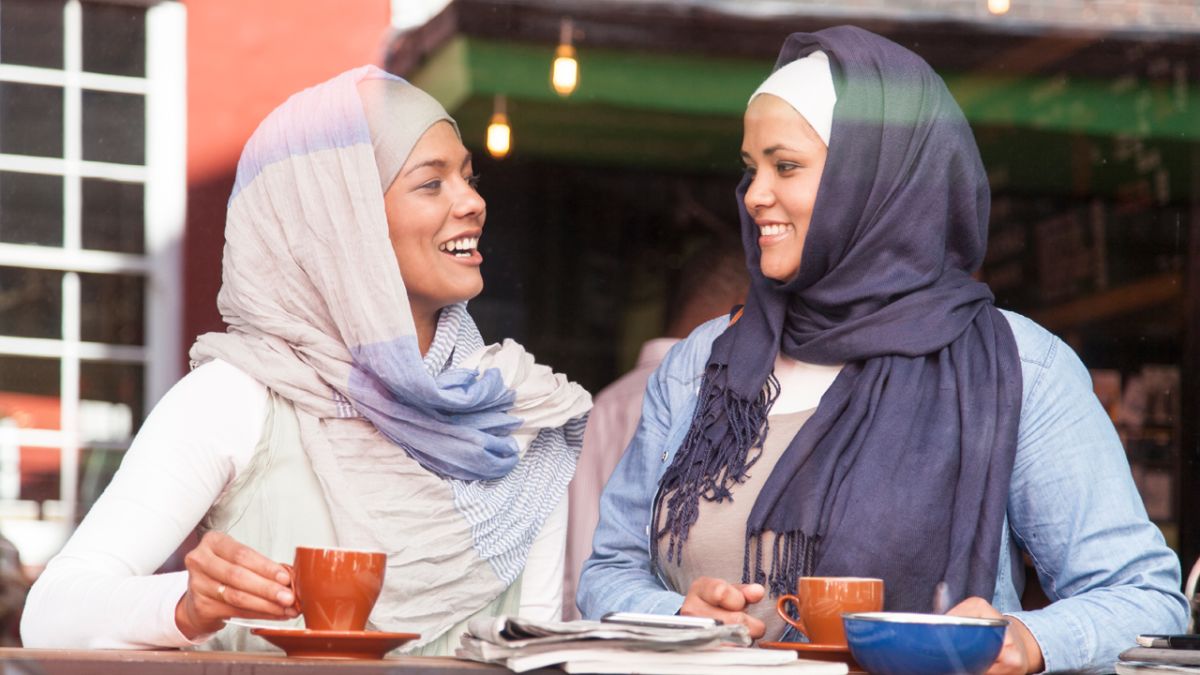
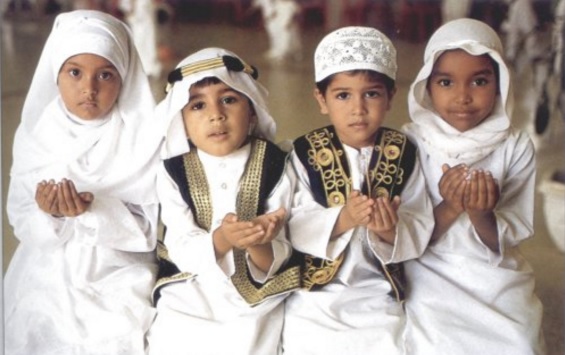

Xhosa
In the Xhosa tribe, a persons dress represents their right of passage and social status, therefore signifying stages of life, age, marital status etc. For the women of this collective, long skirts and aprons made from embroidered and printed fabrics are most common. Beaded necklaces (ithumbu), and beaded bracelets and anklets (iqhiya) are popular accessories. Furthermore, married women show their relationship status by wearing head scarves, and embroidered capes or blankets around their shoulders.
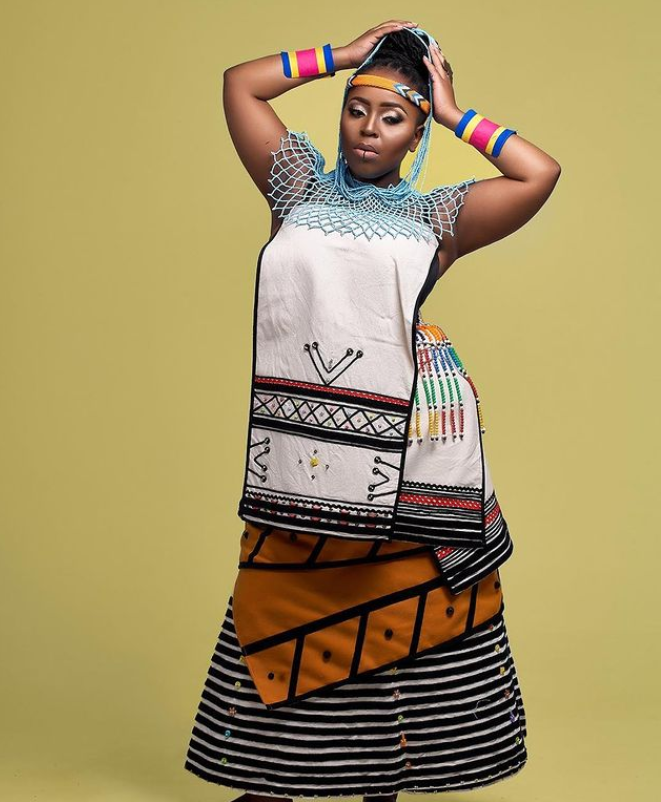

On the other hand, men from this collective were traditionally either warriors, hunters or stickmen. Therefore, garments made from animal skin are popular for everyday wear, while embroidered shirts, rectangular cloths over the left shoulder, tunics and beaded necklaces are popular attire for special occasions.

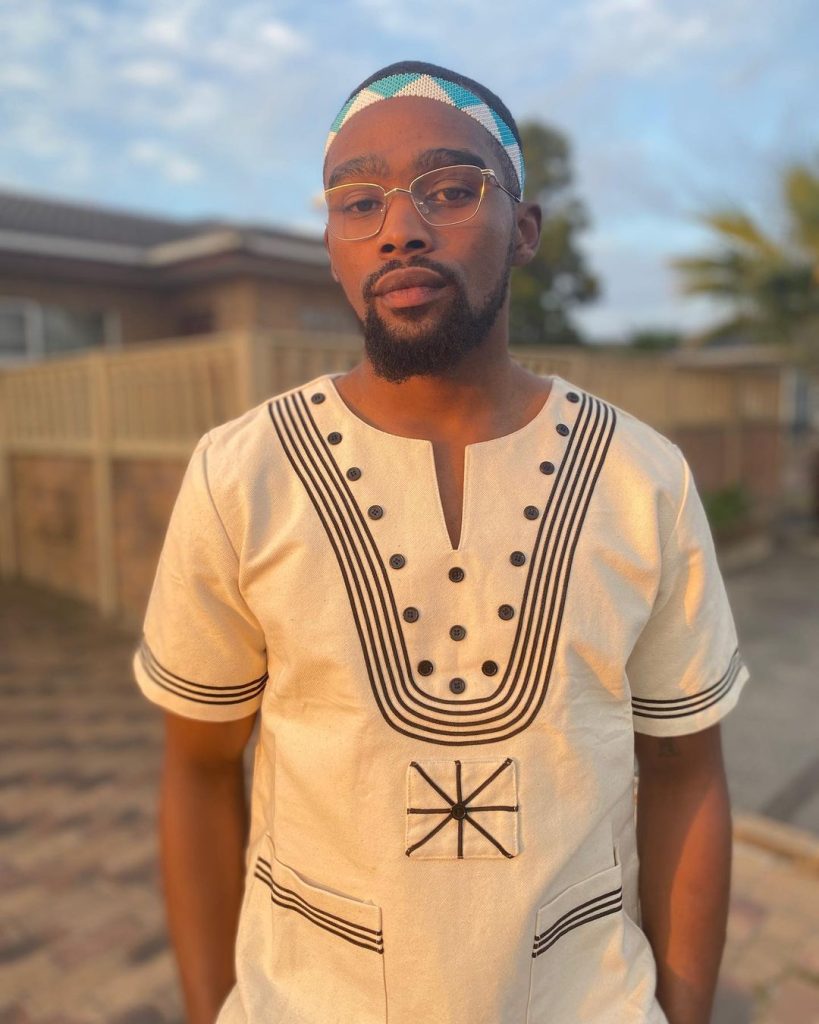
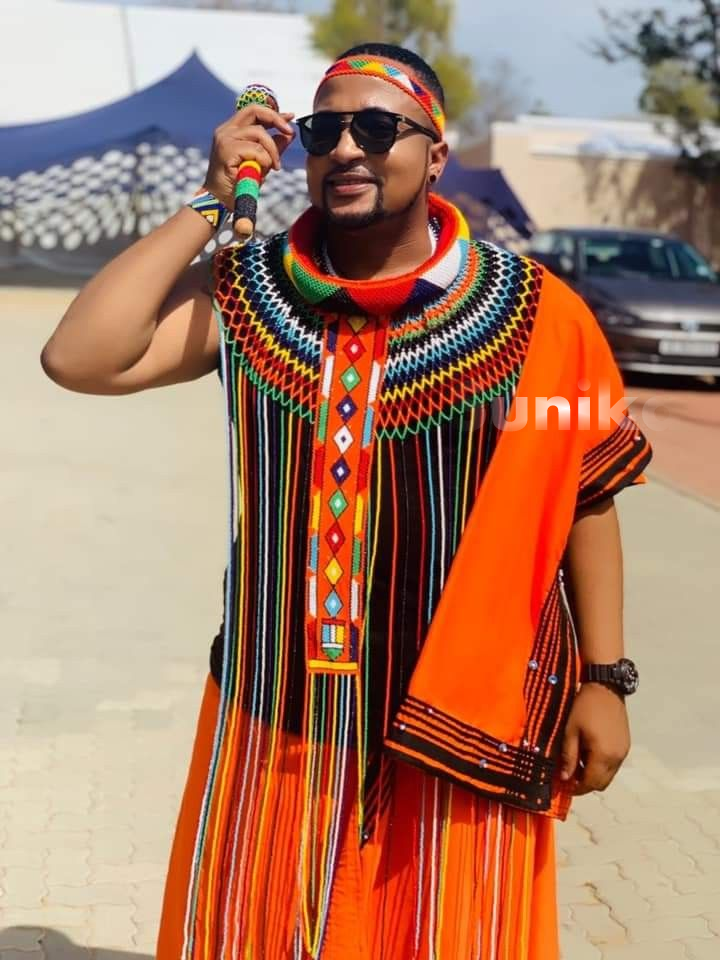
Zulu
In the Zulu tribe, a woman’s clothing represents her stage in life. For example, a single woman is expected to keep her hair short, and wear a short skirt made from beaded reed. When a woman becomes engaged she is expected to wear a similar skirt, however she now must cover her breasts and she can also grow her hair to mid length. Then, when a woman is married she must cover her whole body, to show commitment and respect for her husband. Women usually cover up with a long skirt made from cowhide, a cotton vest, and accessories with a beaded necklace. A married woman may also grow her hair longer, and will usually wear a circular hat known as ‘izicolo’ made from a mixture of grass and cotton.
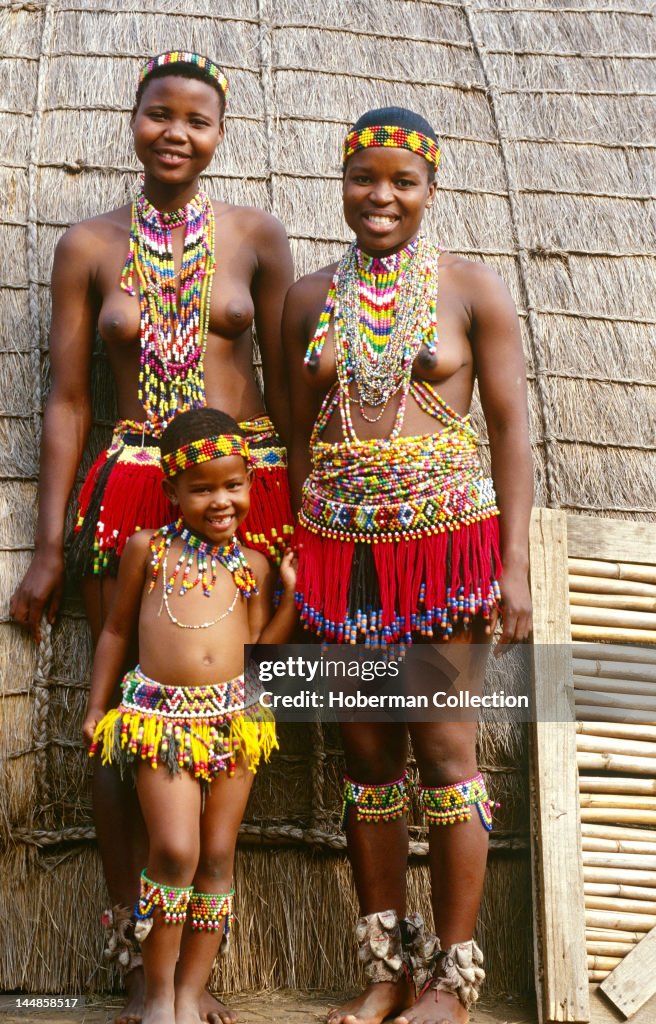
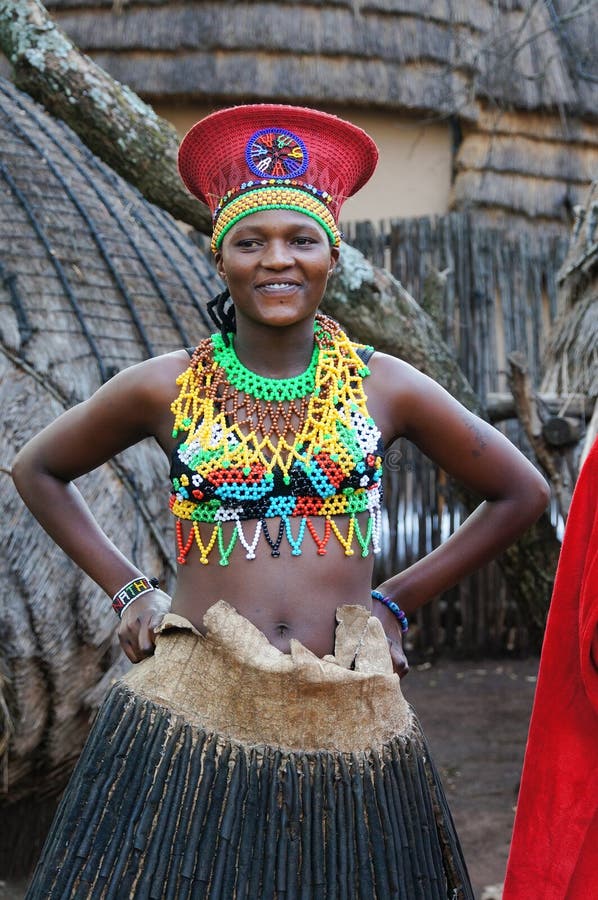
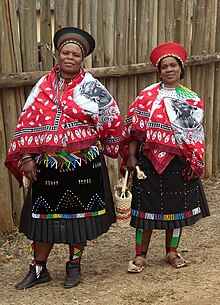
Men in the Zulu tribe often wear garments created from animal skins and feathers. The kind of skin a man is wearing helps to signify his status. Furthermore, tufts of cow tails are usually worn on the upper arms, and below the knee, to boraden the appearance – this is known as ‘amashoba’. These men also usually wear an apron made from calf skin to cover their private areas, known as ibheshu. Younger men often wear an apron to just above the knee, for practicality – as this allows freedom and movement for dancing, hunting and fighting. However, older men are usually retired from these activities, therefore wear an apron to the ankle.

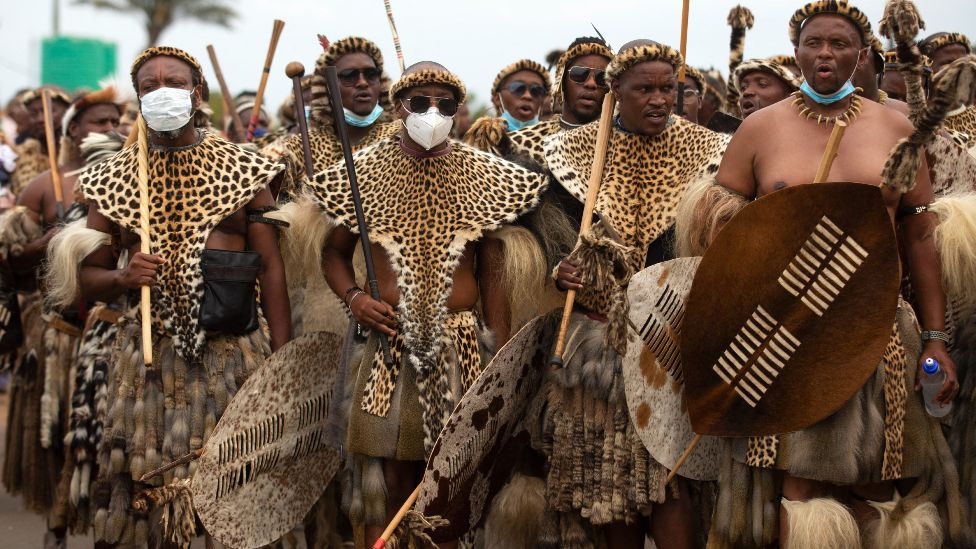

Tsonga (Shangaan)
Men of the Tsonga groups often wear animal skins to cover their private areas. The kind of skin often helps to signify a man’s status.


Women however, wear bright beaded jewelry and colorful, gathered skirts known as ‘xibelani’.

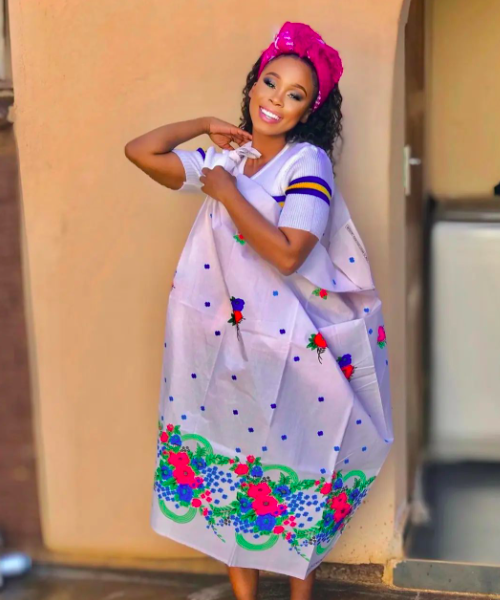

Ndembele
The people of the Ndembele tribe are known for their colorful and intricate bead made garments. The women in this group often wear aprons to cover up. It is traditional for a younger girl to wear a short beaded apron until she reaches a certain age, where she will be gifted a longer version known as ‘isiphephetho’ by her mother, along with thick beaded hoops to be worn around the neck, arms, legs and waist. Married women often wear longer aprons that are made from hardened animal skins and decorated with bright geometric designs. They will also usually wear copper rings, known as ‘idzilla’, around the neck, ankles and arms. Furthermore, unmarried girls are not expected to cover their breasts, but a married woman should cover up with a striped or beaded blanket.
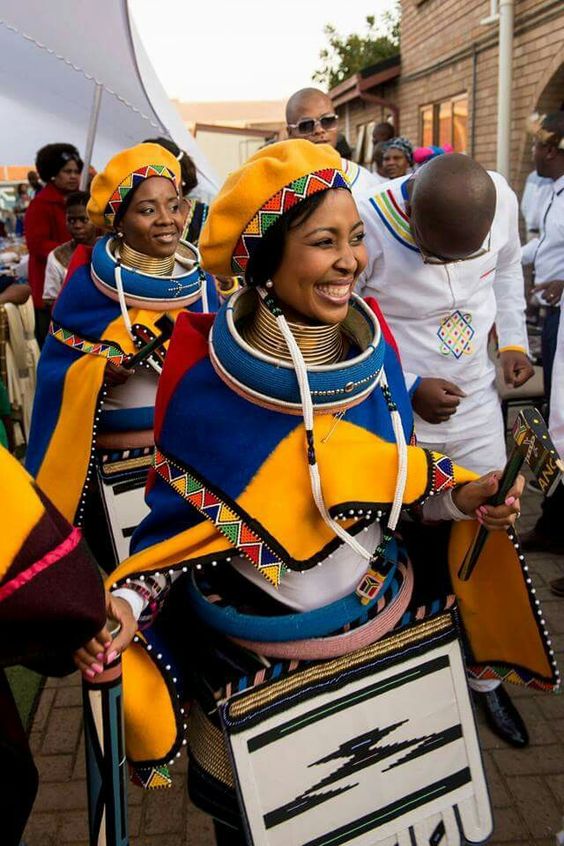


The men in this group are known to wear animal skin aprons, along with beaded breastplates, known as ‘iporiyana’ that hang from the neck. These are a symbol of manhood, and are gifted to a young man by his father once he has completed his initiation.

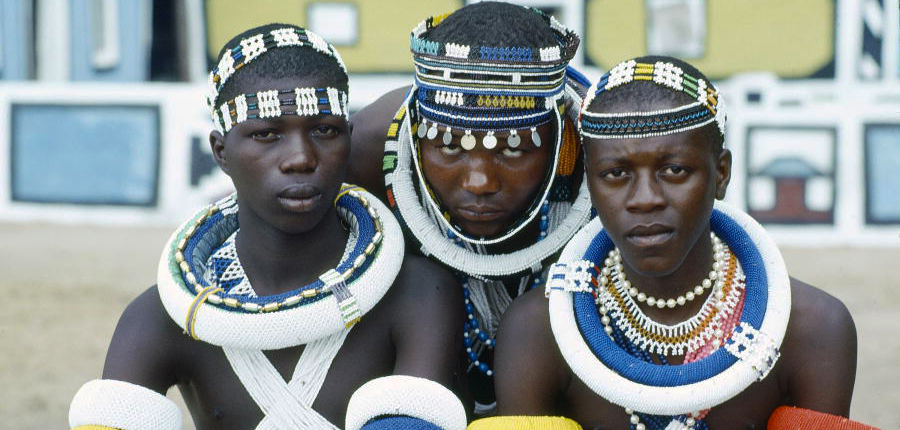
Venda
Girls in the Venda group often wear an apron, known as the ‘shadow’ to cover their pubic areas. Then, when breasts begin to develop a bright, striped fabric known as a ‘nuenda’ is worn either around the waist or across one shoulder, to cover up. Beaded necklaces, bracelets, bangles and headbands are popular accessories among this group.

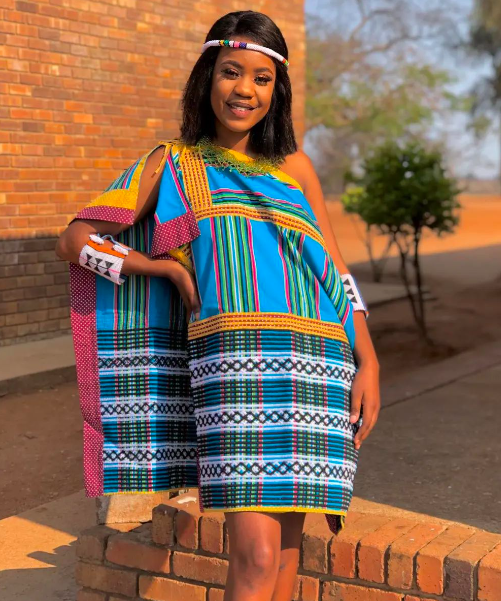
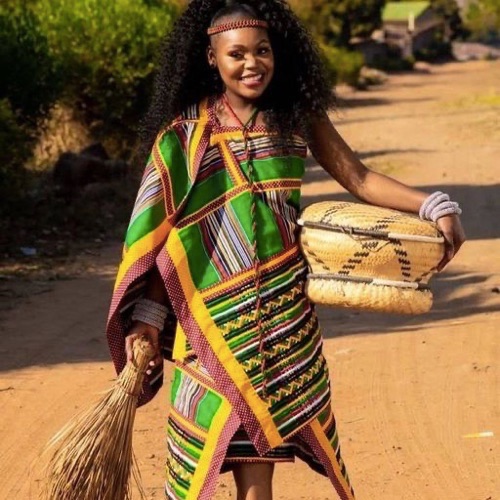
The boys and men of this group are usually seen wearing a loincloth known as ‘tsindi’. This is a piece of animal skin that is used to cover the private area. In colder weather men also tend to wear a cloak around their shoulders. However, modernization means many men now wear fabric shirts and trousers in day to day life.
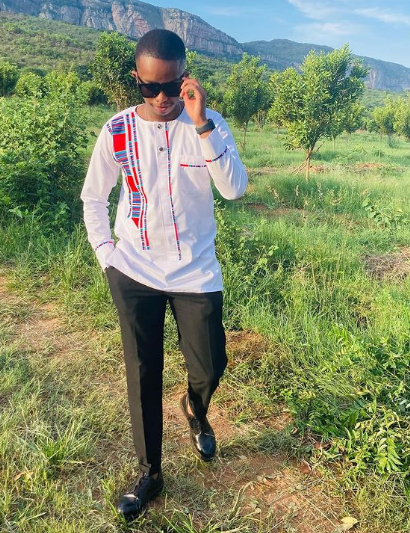


Street Fashion
South African street fashion is very very casual. You’re lucky to even find a restaurant who has a dress code stricter than smart casual. Due to a mixture of both the climate, and the fact there are a vast variety of ethnic groupings living in the country, it is easier to have fashions that may be followed by everyone in their own unique way. Some of the most popular street wear garments include; sunglasses, cross body bags, black skinny jeans, pumps, tank tops, walking shoes, maxi dresses, jackets, jerseys, boots, sandals, denim shorts, beach wear, hats, and high waist trousers.

